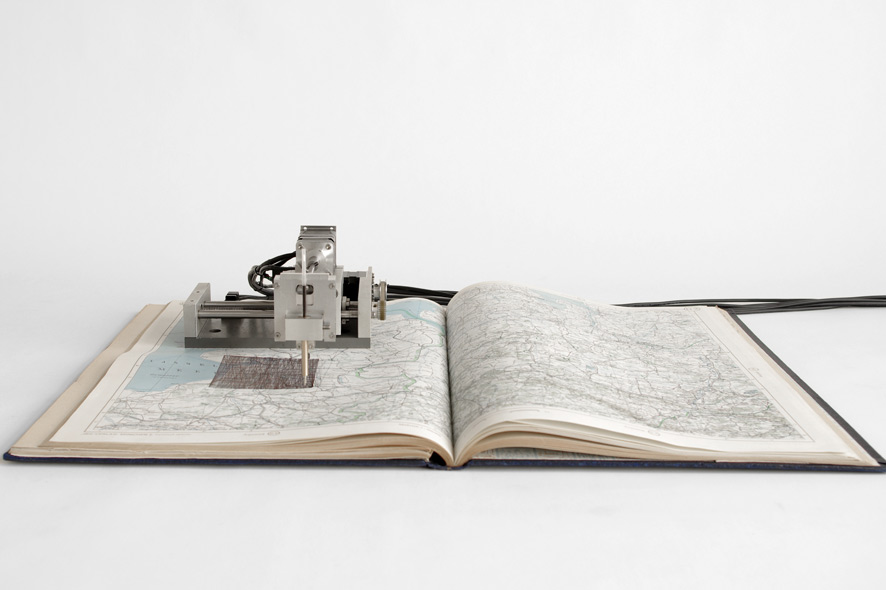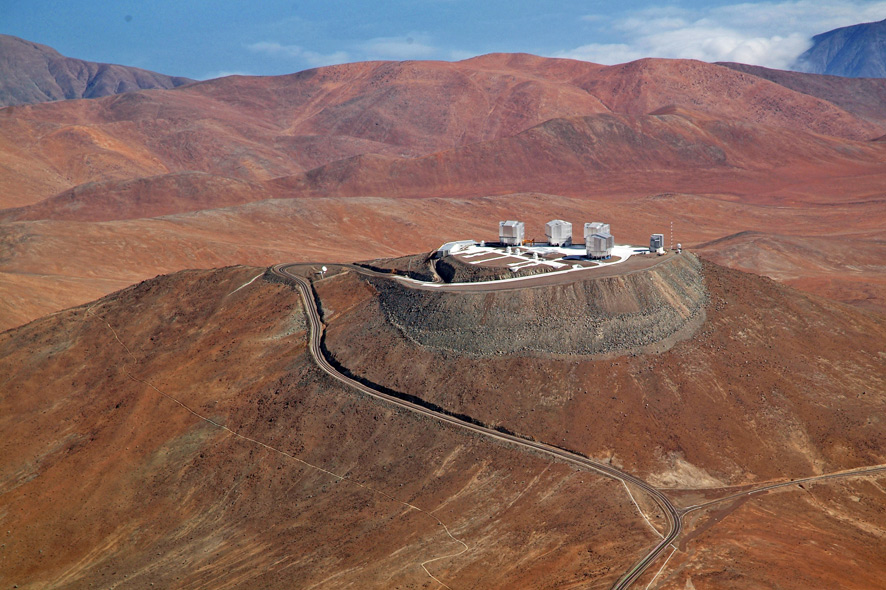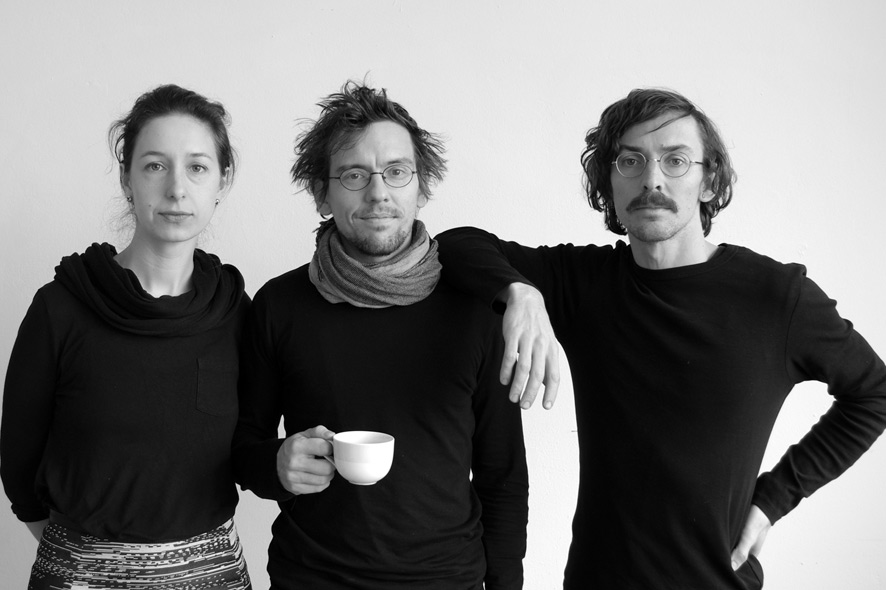Exploring outer space is nothing new for the members of Quadrature; the artists’ collective has been dealing with this realm for several years now. Jan Bernstein, Juliane Götz and Sebastien Neitsch not only bring to the table great interest in and previously acquired knowledge about the ESO locations in Chile ; they’ve also utilized the ways and means of art to make the invisible visible in works such as “Voyager” and “Satellites.” And it was precisely this approach that the 11-member international jury found so “extremely exciting” in the context of this residency. 322 artists from 53 countries responded to Art & Science’s third open call for applications. We asked Quadrature what they’re planning for their Chile trip and what it’s like to work as a collective.
What do you find particularly fascinating about outer space and how did this interest actually come about?
Sebastian Neitsch: We grew up with stories and images of our universe, both real-life accounts and utopian ones. Rockets, time travel, space stations, life on Mars, aliens … Scientists aren’t the only ones for whom the cosmos and space exploration provide a virtually inexhaustible source of inspiration.
Jan Bernstein: Outer space as a location is very real and at the same time intangible. Its size and endlessness make it an incredibly abstract, almost unreal idea, the dimensions and contents of which often exceed our powers of imagination. These boundaries of the possible and the feasible, of the intellect and of knowledge are what interest us most.

VLT in Paranal, Credit: ESO/Y. Beletsky
What plans and ideas do you have for your residency at the ESO locations in Chile?
Juliane Götz: Actually, we feel a bit like explorers ourselves, like we’re trailblazers who are being permitted to penetrate a remote, inaccessible region to obtain insights into another world. We know the ESO locations from photos, we’re aware that they exist. But now, to actually have access to this sort of “scientific colony,” this crazy high-end technology, and to experience this secluded, isolated part of the world—this is a highly auspicious prospect. The research being done there is work on the leading edge of physics in a technical, experimental and theoretical respect. We very much hope that, as a result of our stay there as well as our conversations with the people working on site, that we’ll be able to get at least a bit of a feeling for these outer limits of state-of-the-art science.
Jan Bernstein: We’ll probably be spending most of our time at the Paranal facility to get acquainted with, among other things, the VLT with its Laser Guide Star. We’d also like to inspect the nearby EELT construction site. Plus, a visit to the ALMA facility, which is apparently quite an elaborate undertaking, has really gotten us curious—precisely because of the great difficulty of reaching this place. The thin air up there, the mandatory fitness check, the long journey to even get there—we won’t soon be taking another trip so close to outer space. In fact, after the residency, we want to remain in the region a few more days, hike around a bit and sleep out under the stars.
Your previous projects such as “Satellite” and “Voyager” make visible the positions of manmade objects in outer space. What motivated you to want to visualize these things?
Juliane Götz: Here too, it’s a matter of this contradiction between knowing something and comprehending it. These works constitute our endeavor to establish direct access, to open up a sort of window from our everyday experience to the actual reality we’re surrounded by.
Sebastian Neitsch: We, humankind, have now extended our sphere of action from the Earth out into the cosmos. In the form of satellites, we’ve created a new level of infrastructure that’s constantly orbiting above us, helping us and observing us. All of us make use of it on a daily basis without paying much attention to it. And then, at night, you actually see one of these machines flying overhead, lights ablaze, and you know: they actually are there!

The project “Satellite”, Credit: Quadrature
What, in your opinion, are the benefits of linking up art and science?
Sebastian Neitsch: Science, its insights or its methods, are, for us, inalienably connected to art. Both are seeking answers, seeking not-yet-posed questions, seeking new possibilities. The purposefulness and precision that characterizes scientific research, its tried-and-true techniques and principles as well as the latest theories can be experimentally processed and conveyed very well. In art, one has a big advantage in this respect: not having to find a generally valid truth.

ALMA telescope. Credit: ESO/C. Malin
Who assumes what role in the Quadrature collective? Or is this something that’s not strictly predefined? And do you have any advice for artists who are themselves considering assembling such a coalition?
Juliane Götz: For us, the collaborative work constitutes the basis for developing and implementing our ideas, but this doesn’t mean that we’re constantly working together. In the concept phase, we talk to each other a lot and exchange our respective considerations until a clear focus emerges. Nevertheless, each of us needs his/her own creative space, mental phases of rest in which we can elaborate and develop our own thoughts independently of the others. In the production phase, there’s usually a very clear division of labor.
Jan Bernstein: For us, it’s important that the individual doesn’t lose his/her independence, and yet we still have a shared conception of what we want to do and how we want to do it. Stick-to-itiveness and the capacity to compromise are absolutely essential.
What three things are you definitely taking with you on your trip to Chile?
Jan Bernstein: Camera. Jack-knife. Cap.
Sebastian Neitsch: Tent. Compass. Writing paper.
Juliane Götz: Notebook. Scarf. Binoculars.

Credit: J.L. Dauvergne & G. Hüdepohl (atacamaphoto.com)/ESO
Jan Bernstein, Juliane Götz and Sebastien Neitsch met at Burg Giebichenstein University of Art and Design in Halle, Germany. After completing their education, the artists worked individually in, among other cities, Antwerp, Linz, Valencia, Vienna and Stuttgart. They collaborated for the first time in 2000, and went on to establish Quadrature, a collective in which each member inputs his/her own specific skills and focal-point themes. Most of their artistic projects focus on the contradiction between knowledge and comprehension.
Find out more about the European Digital Art & Science Network on ars.electronica.art/artandscience. For photo stories and interviews of all winners please have a second look at our Ars Electronica Blog.
